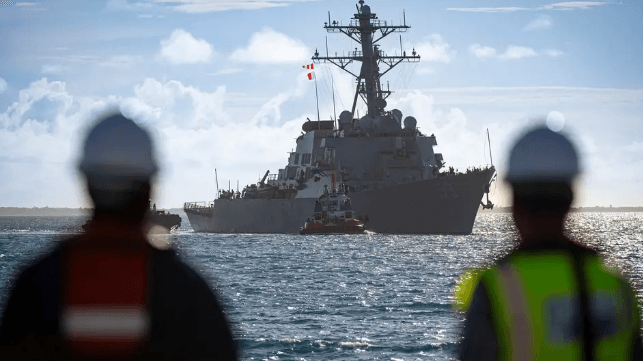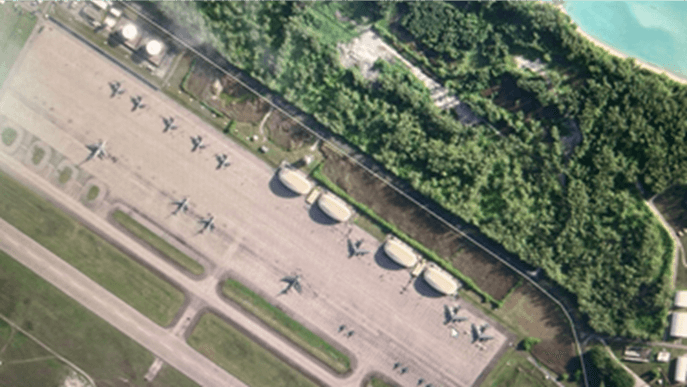After Strike on Iran, Concerns Remain Over Diego Garcia's Future

The US naval Support Facility on Diego Garcia in the British Indian Ocean Territory is recovering its stand-by status after hosting heightened operational activity during US operations against targets in Yemen and Iran in recent months.
The complement of aircraft parked up on the airfield’s South Pan has dropped to what appears to be pre-conflict levels. Three KC-135R that had been stationed on Diego Garcia since May were seen leaving on July 21, but another KC-135R had arrived the previous day, suggesting a rotation was taking place and only a slimmed-down presence was to be retained. On August 5, only two KC-135s were seen in imagery on the pan, suggesting that the surge force of B-52s and F-16s have withdrawn back to their home bases.

The South Ramp on Diego Garcia in busier times on June 22 (Sentinel-2)
Also noted returning home, to port in Japan, were two Arleigh Burleigh guided missile destroyers from the Yokosuka-based Destroyer Squadron 15. Both USS Ralph Johnson (DDG-114) and USS Milius (DDG-19) have made a number of stops in Diego Garcia in recent months, the last respectively noted on July 13 and 21. A Seventh Fleet spokesman implied that both destroyers had fulfilled a role providing cover for Diego Garcia during the period of heightened tension, in the wake of Iranian threats to target Diego Garcia.
The Seventh Fleet spokesman also highlighted the strategic importance of Diego Garcia, reflected in a graphic then published in Newsweek. However, analysts have noted that Diego Garcia was not used to stage attacks on Iran, and this could be because of the stipulation in the pending UK-Mauritius handover treaty that Mauritius should be given forewarning if Diego Garcia is to be used for mounting operations against third countries.
Meanwhile in Washington, both the Heritage Foundation and the House Appropriations Committee have raised reservations about the British Indian Ocean Territory surrender of sovereignty, with commentator Nile Gardiner suggesting that "major red flags are being raised in Washington," and that both the President and the Vice President are having second thoughts about the deal, having previously assented to it.
The deal remains popular however with both China and India, which can befriend Mauritius, undermine the deal and exploit its weaknesses, without having to pay for a lease. The United Kingdom - which is struggling to maintain its single frigate permanently stationed in Bahrain - will be committed under the Treaty to paying Mauritius an annual rent of $220 million for each of the first three years, and then $160 million adjusted annually for inflation thereafter.
The opinions expressed herein are the author's and not necessarily those of The Maritime Executive.
